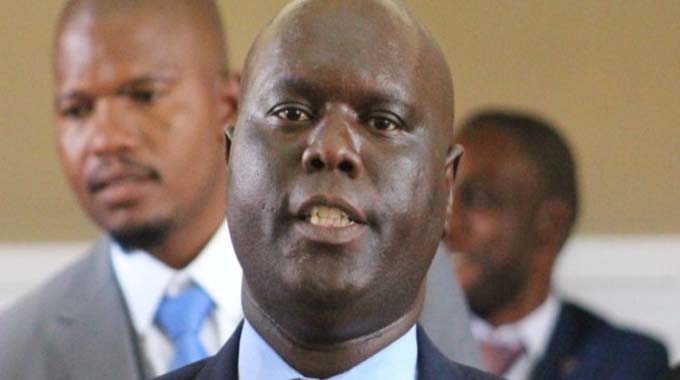TSP: Transforming Zim’s mining sector

Vince Museve Towards Vision 2030
ZIMBABWE is well endowed with numerous mineral resources with 40 different minerals and 800 operating mines. Without strong institutions and good macro policies, even the very best mining policies will not unlock value.
The Transitional Stabilisation Programme (TSP) recognises the key role to be played by mining in our future growth. The TSP is therefore targeting to reopen closed mines, to revive mines which are operating below capacity, to open new mines, to promote beneficiation and value addition through domestic smelting and refining and to increase earnings from mineral resources.
For 2018, mineral revenues are expected to make up to 70 percent of total export revenues while contributing 26 percent of GDP. This projected growth of 26 percent is being driven by strong performance of gold, coal, chrome and diamond while other key minerals from the platinum group of metals (PGMs) are underperforming for various reasons. In order for the mining sector to operate at full capacity, the Chamber of Mines has estimated that Zimbabwe will need close to $11 billion. Attracting investors and availability of long- term development capital will therefore be the key success factors.
The Zimbabwean mining sector is technically classified into three classes: large-scale, small-scale and artisanal mining. Zimbabwean legislation recognises large-scale and small-scale mining but does not differentiate between the two. Of the three classes of mining, artisanal mining employs by far the most people: 500 000 (or 10 times the number of people employed by large-scale mines). Small-scale and artisanal miners now produce more than two thirds of Zimbabwe’s total gold output.
The key success factors for the effective management and full exploitation of our mining resources lie in:
- Political will and leadership
- Institutional renewal
- Policy consistency and accountability
- Crackdown on corruption and IFFs
- Effective and fair tax laws
- Capital mobilisation
- Infrastructure development
- Beneficiation and value addition.
The 2019 National Budget strategy states the following objectives:
Going forward, Government will focus on supporting enhanced production of all minerals to spur growth. More important will be ensuring that leakages from all minerals are plugged.
Mining companies will also be accorded greater access to foreign currency in order to avoid delays in the procurement of key raw materials and spare parts for machinery and equipment.
Furthermore, the thrust should also be to strengthen strategic inter-linkages with other sectors of the economy, through value addition and beneficiation.
In addition, there is need to improve and sustain the livelihoods of the majority of our rural communities in the areas where these minerals are being exploited through a well-articulated Corporate Social Responsibility Framework.
Other measures intended by the Government in support of the sector include the following:
- Capacitating Fidelity Printers and Refiners to mop up all gold, through increasing gold buying and support centres across the country; Capacitating small scale miners, through access to equipment for hire and affordable credit lines and technical skills; Embracing interventions to reduce environmental, social and health impact challenges that arise in artisanal and small scale mining operations.
- Finalising amendments to the Mines and Minerals Amendment Act, which seeks to promote exploration and mining by revoking unutilised claims being held for speculative purposes; Harmonising mining taxation laws to ensure viability of the sector; Facilitating expeditious implementation of currently stalled completion of the base metal refinery at Zimplats for it to reach local refining thresholds in line with the beneficiation roadmap; Capacitating Hwange Colliery to fully embark on underground coal mining; and Resuscitating idle and distressed mines under ZMDC.
As a result, the mining sector is projected to grow by 16,1 percent in 2019 and a further 15,3 percent in 2020, benefiting from strong performances mainly in gold, diamonds, chrome and coal.
It is important to note that Zimbabwe has historically added value to its chromite to produce ferrochrome, the use of coal in power stations, gold refining, iron ore to steel, smelting of nickel, the production of platinum concentrate and matte. The issue has been the creation of linkages with the industrial sector to manufacture finished products which will require investment in new technologies and innovation.
I have, however, not heard much on the progress of the Sovereign Wealth Fund (SWF). The SWF must be managed as the country’s endowment to future generations and can make significant positive impact on the wealth creation and development of the country.
The SWF can indeed be viable where there is disciplined fiscal management and there is no temptation to use that money for recurrent expenditure. That is the greatest risk we shall face. The SWF can shift resources from consumption, which is far too high in Zimbabwe (90 percent of GDP), to savings and – if properly managed – efficient investment.
A long-term vision to develop and broaden our mining base, attraction of foreign direct investment and transparency with regard to transaction and revenues, will be the critical success factor for a viable mining sector that benefits all Zimbabweans.
In my opinion, the Minister of Mines is certainly doing a good job as we have seen increased activity and investment in this sector. We, however, need to resolve the issue of always availing foreign exchange to key producers and avoid shut- downs which would have a devastating knock-on impact on our economy.
The full exploration of our resource base, better valuation methods and transparency in accounting for revenues and a clampdown on opaque illicit deals can only help the country move forward towards Vision 2030.
Zimbabwe will rise!
Vince Musewe is an economist and economic policy advisor. You can contact him directly on [email protected]










Comments